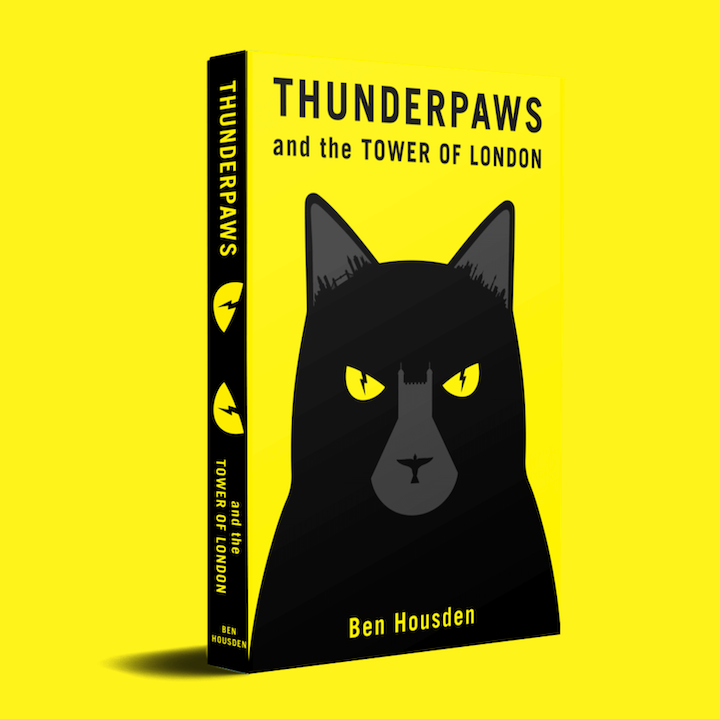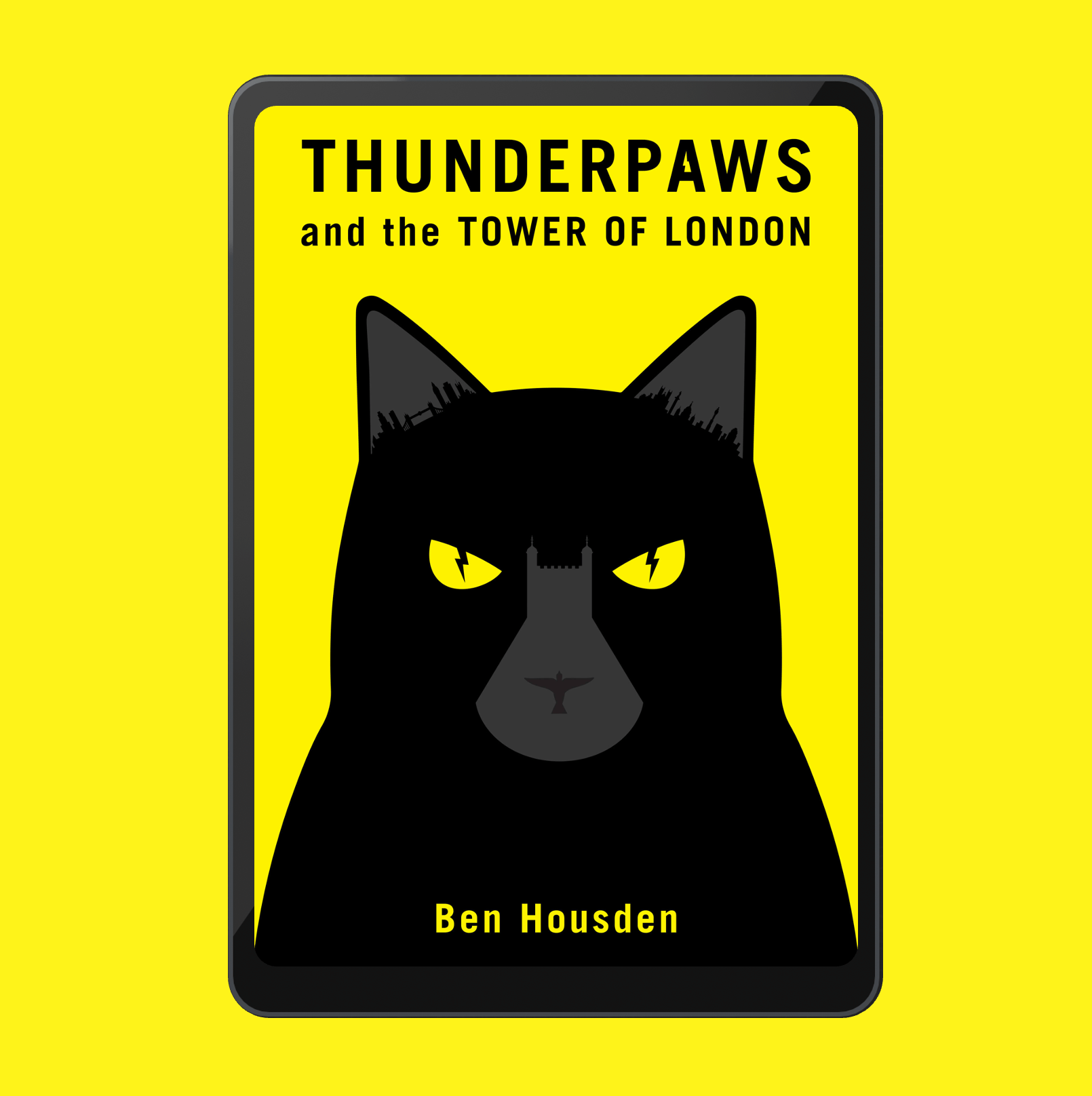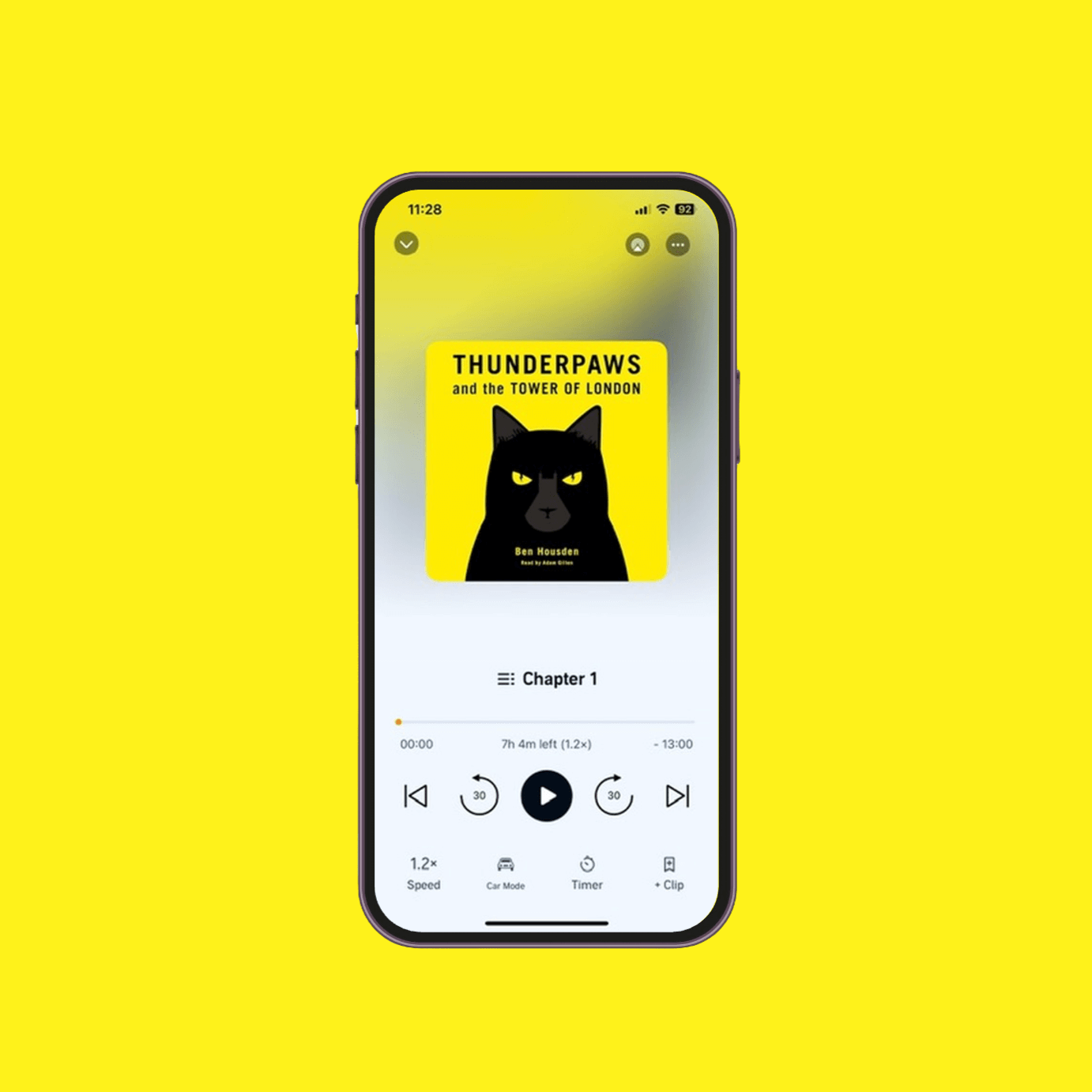Limited-time launch offer: get up to 50% off Thunderpaws!
Frequently asked questions
If you have a question not listed here, please ask at hello@thunderpaws.com
The reading experience
Is/Was Thunderpaws a real cat?
Thunderpaws here with the Typist… Of course I am! I was born in Salcombe, on England’s south west coast when mum was Chaplain’s cat and he was vicar to Holy Trinity Church after a career in the army. Kittened-up, I went to live with the bar manager at Salcombe Yacht Club (top snacks), but he moved on, so it was back to the vicarage still as a young cat. Chap and Mrs C got all excited after a letter arrived and the next thing, after a lot of weird box action, I wake in the strange dark cellar where this story begins.
What reading age is Thunderpaws for?
There’s this thing in book land (you find out a lot of new things as a cat) – books are written to age ranges, and have styles to those ages, and things you should have at one age and not at another. And basically as a cat – dogs to all that!
Thunderpaws is for people who love stories. And books. And cats. And even those people who don’t (because I win them over). Young. Old. It makes no difference.
It’s not for the youngest readers – there is word play and scary stuff – but advanced reading 8/9 year olds and up love it. Don’t go thinking it’s just a kid's book, the main readers are actually adults.
The language is fun and literary. There is a dictionary of cat terms and unusual British words for younger readers and people where British English is an additional language. Listening to the audio while reading really enhances the experience – whether print or ebook.
What is the reading/listening experience?
I woke in a cellar and didn’t know where I was or why. The story takes you on a two week journey from that strange midnight, as I impose myself on the Tower and the Tower tries to imposes itself on me, and well who wins between cats and humans!
You don’t need any knowledge of the Tower, British history or British royals. You find out as I find out. Chapter six, the ghosts turn up. My writing (the typists’ typing) has been described as visual and film like.
How can non-cat people like a book with a cat as the hero?
I have thought about this. It could be they’ve finally seen the light – the charm and grace and tenacity and wonder and amazingness of feline-fabulousness-handsomeness has finally slapped some sense into their chops – and I’m probably about 200% right, but the Typist has a different angle.
Apparently, because I (on occasion, or all the time…) do cat things cats do that they know they don’t like, they see they are right about cats, but by then, I’ve got them into the action and they are laughing and smiling and then they are quickly forgetting I’m cat and read the whole book, so who’s the loser now? See, cats always win.
What level of peril is in Thunderpaws?
In the battle scene things get pretty hairy. Young readers are going to find it "good scary". The peril is similar to the later Harry Potters. The youngest reviewer, Stella in Washington DC, aged 8, said:
‘Thunderpaws and the Tower of London is a truly amazing fantasy. Just keep this in mind: if you don’t like scary books, you won’t like this book. Ghouls, ghosts, dragons, giants––the list is endless. But if you don’t like ghosts, this might change your mind…’
I’m American, will I understand British English?
Americans love me! Every tourist from everywhere. You’ll see there’s a dictionary at the front following a memo from the publisher’s department of Dictionaries and International Relations & Translations introducing you to cat thinking (usually about humans), uncommon British words, and my occasional rather loose use of language (smashing words together). If you read with the audiobook playing along it adds to the fun.
English is an additional language for me, can I read Thunderpaws?
Readers across the world love me too. As above, there’s a list of more uncommon English words at the front by the publishers’ department of Dictionaries and International Relations & Translations. Reading with the audiobook will also help.
Do I need to know British history and royals to read Thunderpaws?
No. I landed at the Tower, not knowing where I was or why. You join that experience. You don’t need to know to the Tower, British history or British royals. You learn little bits as I find out, especially when the ghosts turn up in chapter six, but it’s a fast and funny fantasy action adventure not a yawn-yawn Edward ate a cabbage in 1632 history book.
Is Thunderpaws actually good for reluctant/attention-deficit readers?
Yes, the widely spaced text, the curious page setting, the illustrations that let you peak into the future of where the story is going (if you choose), all help it appear more approachable and accessible than a normal dense-text novel.
Is Thunderpaws actually good for readers with dyslexia?
Dyslexia affects something like 1 in 10 readers. Again, anecdotally, the widely spaced text is helpful for readers with dyslexia.
Who are the artists involved?
To be fair, the Typist did well getting people to help turn to Thunderpaws into a proper cat-level quality book.
The full page illustrations are by MonoKubo, an amazing and pioneering Japanese artist, famous for her fantasy settings and giant oversized animals.
The audio is read by Adam Gillen, an Olivier-nominated English stage and tv actor and frequent star of London’s Shakespeare’s Globe theatre.
The special text layout and chapter ornamentations were created with Robyn Lawrence a print graduate of London’s Royal College of Art, the world’s best art school.
The new front cover, back cover, and internal cover illustrations are by Noma Bar, a world renowned graphic designer, illustrator and artist.
The interior of the new edition was designed with Claire Mason of Flush Left – one of the UK’s best book designers.
The cover is by one of the UK’s best cover designers, Mecob.
Printing of the new edition is by Italy’s best artbook printer, Graphicom.
The print book
Why does the print book look different to a normal novel?
Thunderpaws is being in the mind of a cat. On the printed page, Robyn Lawrence the page designer, put me on the left, with other characters on the right.
Words are made of letters. Put together they create meaning and emotion. Robyn has added placement, which enhances attention and enjoyment. Reading Thunderpaws in print has been likened to watching a play – more immersive and more enjoyable than a normal novel – as readers follow each line more intently, but it takes about 30 seconds for the brain to adjust to the reading experience on the first page.
What is the reading experience of the print book?
As above, likened to watching a play, it’s more immersive than a traditional novel. Helping to enhance focus on the page. Anecdotally, readers with dyslexia have found it easier to read than a traditional novel, and the innovative layout can be helpful for reluctant readers and readers with attention issues.
The audiobook
What does acted audio mean?
Adam Gillen, the actor who reads Thunderpaws, has given voices to all the characters and follows the action of the story. This means that at high action points, character voices can be raised – but never to a real shouting level – rather it’s the feeling of it.
If I order the audiobook, how does it arrive?
The audiobook files arrive via an emailed download link, with easy to follow instructions on how to get them on your chosen device. A fast and friendly support function of real humans are available by email if needed. The link is valid for one person only and the files are ‘watermarked’ with your order details. The files cannot be played inside Audible – for an the Audible version of the audiobook, please order from Audible in the usual way.
My audiobook emailed download link has expired, what should I do?
Please contact hello@thunderpaws.com – we will check your order and resend a fresh link as long as the files haven’t been previously downloaded.
The ebook
Is the ebook formatted like the print book?
No. The ebook has standard novel formatting. It’s not possible to replicate the print book’s layout with ebook technology. The ebook has all the colour art from the print book – so if you are reading it on a phone, tablet or colour e-reader like Amazon’s Kindle Colorsoft, you’ll be able to see all MonoKubo’s art in colour.
How can I see colour art on my e-reader?
Most e-readers currently have black and white screens. I’m sure over time this will change, but in the interim, a free PDF featuring all the artwork, the dictionary of Teufelisms and short character bios is available for quick reference on your phone just email art@thunderpaws.com.
If I order the ebook, how does it arrive?
The ebook arrives via an emailed download link, with easy to follow instructions on how to get it on your ebook reader (phone, tablet or dedicated device). A fast and friendly support function of real humans are available by email if needed. The link is valid for one person only and the file is ‘watermarked’ with your order details.
My ebook emailed download link has expired, what should I do?
Please contact hello@thunderpaws.com – we will check your order and resend a fresh link as long as the files haven’t been previously downloaded..
Thunderpaws' other frequently asked questions

Can I read this book with my cat?
It should be safe to read Thunderpaws with your cat. However, I Thunderpaws, the publisher, and the Typist, accept no liability for your cat’s future activities. If they happen to get enhanced ideas on snack demanding, early morning wake up attacks, the bish, bash, bosh of object du art, speedboat steering, or complaints, dog off.

Is the book written in cat?
Thunderpaws is written in English. How Housden received my manuscript to type-up is a Nature state secret – but let’s just say, just because we cats look silent most of the time doesn’t mean we are. Nature is science. And like science, you humans don’t always have the clue you think you do.

Are there side effects to Thunderpaws?
Increased laughter and smiles, possibly a sophisticated appreciation for boxes, ghosts, and the irresistible urge to sort out nonsense from human brains with a good swipe. Oh, and impatience for the sequel – Thunderpaws and the King.

What exactly is a cat stare?
There are 332 cat stares. There are wall stares, ceiling stares and corner stares among many others. We know what we are doing – unfortunately we can’t tell you, well, because frankly you’d get freaked out. Better you think it’s all a life of leisure – home, fed, watered, and poopa-pee-scooped (we can’t tell you the joy of that mugging).

How many lives does Thunderpaws have?
The age-old question. For suspense, personal safety and reducing spoilers, I’m coy on this detail. Let's just say I’ve had enough close calls with London's underworld and far, far beyond to make even the most daring cat's whiskers curl.

Does Thunderpaws have special powers?
Regrettably I do not. This is not the Superman of cats. I’m a big, hunky black cat – who happens to get tasked with saving the world. Did my mum tell me I was special? Of course. Might I have a special job? I may. It seems, I do possess an ability to find trouble. As for other skills... well, you'll just have to read and find out.

Is the book suitable for dogs?
Hello? What planet are you on? Dogs that read? Dogs are beyond it. You’ll note the evidence from your lived experience. A cat sees words, a book, a keyboard – we take a seat. We rest our head. Get involved. Reading by osmosis-catamagnetic-induction-thingamy. A dog doesn’t even look. Books are not their world. Give them a pat (I’ll have poached salmon).

Can Thunderpaws talk to humans?
This is not a talking animal book. Nope. Nada. Never. You are being given a sacred glimpse inside the natural world. If you believe nature sits in silence watching humans gabble: nope, nada, never. We very much have language. Thunderpaws, if you like, is a translation. An opening into what’s happening around you.

Is Thunderpaws a true story?
Of course! Do you think a cat would lie? That a mere typist could make all this up on his own? The only reason you’re alive to read this is because I saved the world, and thought it was about time you knew. Really there should be medals.
Where is the Tower?
The Tower of London is in the east of the city
Where is Thunderpaws?
⬇️
'Might be the next
Great British phenomenon'
⭐️ ⭐️ ⭐️ ⭐️ ⭐️
'Read, Audibled and re-read, means I really enjoyed it!'
⭐️ ⭐️ ⭐️ ⭐️ ⭐️
'Ultimate power
is in the characterisation'
⭐️ ⭐️ ⭐️ ⭐️ ⭐️
Choose your cat

THUNDERPAWS
– ready to dive in?

(Limited pre-Christmas print stock)



